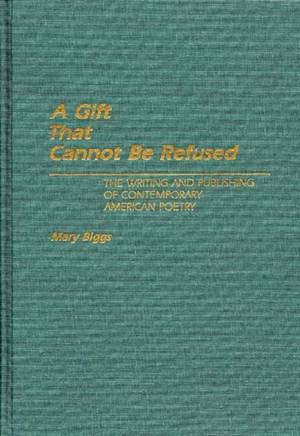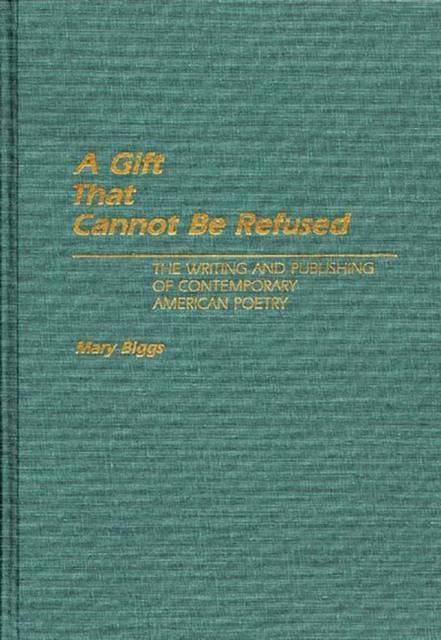
- Retrait gratuit dans votre magasin Club
- 7.000.000 titres dans notre catalogue
- Payer en toute sécurité
- Toujours un magasin près de chez vous
- Retrait gratuit dans votre magasin Club
- 7.000.000 titres dans notre catalogue
- Payer en toute sécurité
- Toujours un magasin près de chez vous
Description
This unique work is the first book to bring systematically gathered and analyzed data to bear on the question of how contemporary poetry reaches the American public. It explores the publishing patterns, experiences, methods, motivations, and rewards of 203 living American poets from 1950 through 1980. Although all the poets have published quite widely, including at least one poetry book, they range from the little-known to the famous, from the well-established to the relatively young, from those who write in more or less traditional forms to the highly experimental. Among the many poets who cooperated in the study are Philip Levine, Gary Snyder, Allen Ginsberg, Theodore Enslin, Maxine Kumin, May Swenson, Donald Justice, William Stafford, Mona Van Duyn, Robert Hass, and Robert Pinsky. The book also explores the roles played by the major categories of periodicals that publish poetry-general interest magazines, academic literary journals, and independent little magazines. Commercial book presses, university presses, and small presses are also tracked and analyzed.
Information for this study was obtained from various sources, including the many hundreds of little magazines and academic literary journals published throughout the thirty years; published interviews, with articles and statements by the 203 poets; and an extensive questionnaire survey sent to the poets, as well as many expansive letters that accommodate their returned questionnaires. Two chapters frame the findings. Chapter 1 surveys the publishing of American poetry from approximately 1900 through the 1940s, highlighting important tendencies and trends that continued through 1980. Chapter 8 surveys American poetry publishing since 1980, paying special attention to the major change during this decade: the dramatic decline in public funding for nonprofit literary enterprises. This volume should appeal to those interested in the sociology of publishing, American literature, or creative writing.Spécifications
Parties prenantes
- Auteur(s) :
- Editeur:
Contenu
- Nombre de pages :
- 282
- Langue:
- Anglais
- Collection :
- Tome:
- n° 34
Caractéristiques
- EAN:
- 9780313266737
- Date de parution :
- 22-01-90
- Format:
- Livre relié
- Format numérique:
- Genaaid
- Dimensions :
- 156 mm x 234 mm
- Poids :
- 576 g







